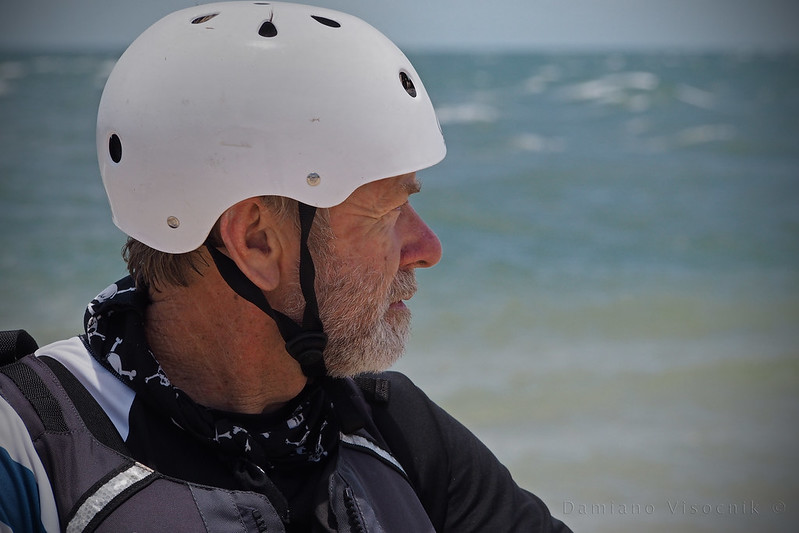I started using the newly "invented" waterproof compact camera to capture images first and then I discovered that some scenes were best captures with motion pictures.
I brought the little Olympus 720SW into the surf zone and devised mounts to go onto my kayaks.
It was fun for a while but the metal bodied cameras don't last in salt water. After killing a few waterproof cameras I decided to revisit the GoPro, housed in a plastic case.
My early experience with the first generation was very disappointing: the resolution was so low that I really could not see clearly what was happening, things were fuzzy. I discarded that camera and labelled it as a "toy".
Then one day GoPro Hero 1 came to the market and that changed everything, totally.
It was a very decent tool with an excellent case that was seriously waterproof and sturdy enough for the footage that I wanted to capture.
I embraced the wide angle distorted view that was giving me a lived-in point of view, not a spectator one, more one of an actor, really being there.
While GoPro can deliver outstanding footage in the right hands and shooting technique, it comes up short when I want to isolate the subject from the busy background.
Action cams (and a lot of compact cameras have) lenses create images where everything is sharp: from the close-up foreground to the distant subjects in a scene.
There is little chance (most often impossible) to isolate the subject.
While most on-water action situation from a sea kayak don't offer me the time and environment where I can compose an image to create shallow depth of field and have selective focusing, on land, away from the bobbing of the waves, I have the time and stability to see the world more selectively.
I find that if I want to emphasize my subject and make it stand out from the visual noise of the background (or occasionally foreground) I need to limit the area that will be in focus in my images.

A blurry background makes a person stand out from a busy scene, a softly focused foreground brings attention to the the kayaks on the beach instead of having the viewer visually wonder around and miss the focal point. A less busy image can sometimes convey a different message.
I predominately use actions cams for video capture and I mix the use of my land camera between still images and video.
Lately I have been experimenting with selective focus on my Micro 4/3 cameras and found out their limitations. Shooting video is particularly challenging with a wide open long lens.
While my cameras excel in image stabilization I struggle to create even transitions of focal points and smooth focus pull. I don't zoom much as I find that most consumer cameras (of reasonable cost) lack real slow smooth zooming. I prefer to concentrate on the camera movement to create a dynamic point of view. As I have never used tripods for video, since I think it creates static scene that are too stiff, giving me a sense of "spectator" instead of a person that is present and involved. Therefore the in-camera image stabilization is very important to me to allow me to move around my scenes without producing jerky footage.
The one thing that I lack with my larger cameras is waterproofness; I have to be very careful around moving water.


No comments:
Post a Comment
Thank you for taking the time to comment.
Because of spam received from unwanted manufacturers/retailers all comments are now moderated. Allow a few days for your comment to appear when the operators of GnarlyDog News are on safari.